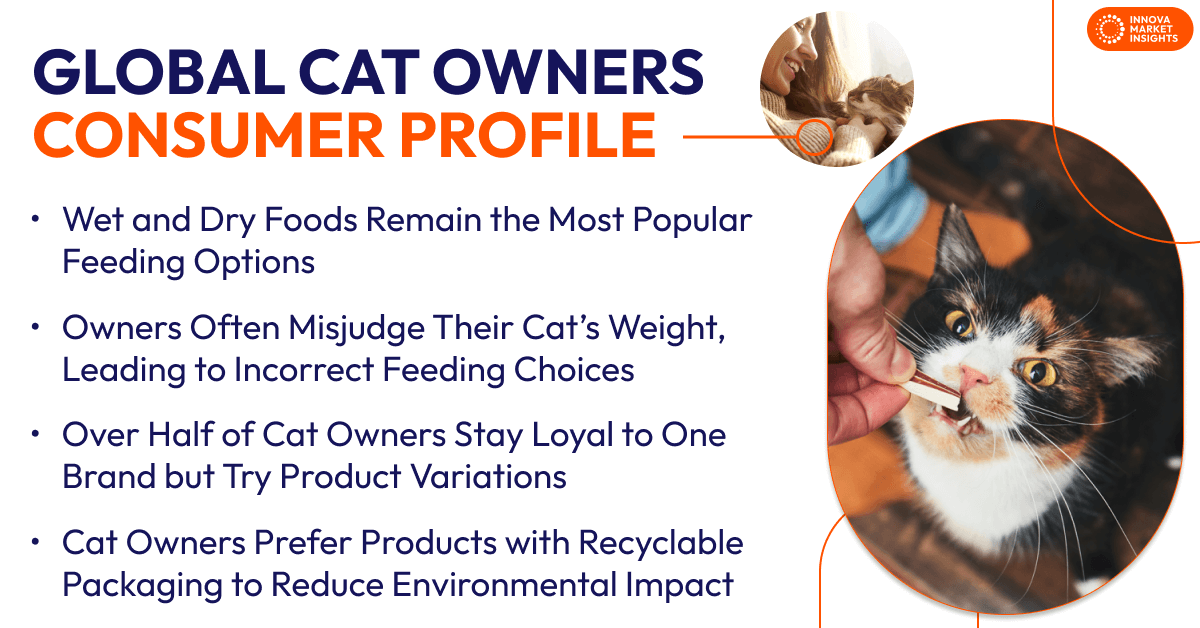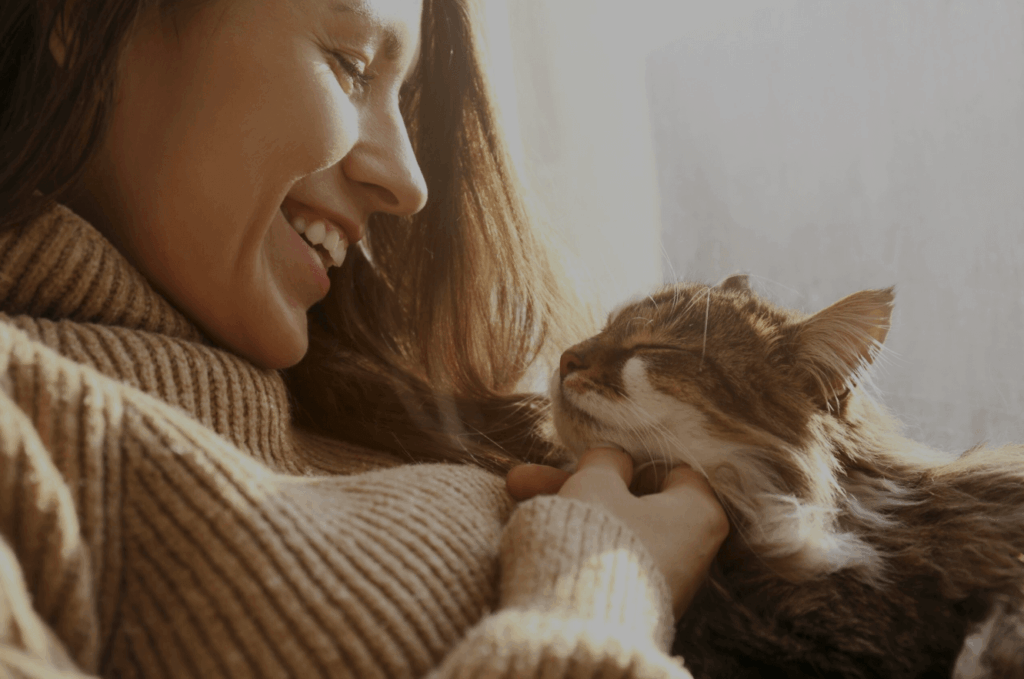May 16, 2025 – The health of their pets is one of the major concerns for cat owners globally. With cats increasingly treated as family members, owners prioritize nutrition, health benefits, and sustainability when selecting products. Innova’s 360 explores key trends shaping cat ownership globally, from demographics and feeding habits to purchasing drivers and brand loyalty. It also highlights consumer demands, the rise of specialized diets, and emerging opportunities for brands looking to meet evolving expectations.
Demographics and Pet Profiles
Globally, cats are split between three breeds: registered breed, crossbreed, and unknown mix. Most pet owners own young adult cats, aged between 7 months and 6 years old. This influences brands to develop most products tailored to that age group. While many pet owners have only one dog or cat, multiple-pet households make up a substantial percentage of the market.
One-fifth of cat owners globally purchase pet foods tailored to their cat’s weight. Although most owners consider their cats normal weight, 40% select the cat’s body image representing overweight cats. This highlights a gap in education about weight assessment and optimal nutrition for cats.
77% of cats are neutered/spayed to prevent overpopulation and reduce health risks. While new products for sterilized cats are emerging, they often fail to communicate their specific benefits.
Feeding Patterns and Brand Loyalty
Most cat owners feed their cats twice a day, following the recommended portion size on the package. Those who do not follow the guidelines are likely to overfeed. The top three pet food types given to cats include dry food, wet food, and treats over the past year. One-third of cat owners report that their cats prefer specific food formats such as chunks in gravy/sauce, air-dried/baked food, dry pellets, and/or pâté/ meatloaf/mousse cat food formats. About 40% of them serve pet store-bought food as it is, while others customize pet foods by mixing different types of store-bought food, adding nutritional supplements, and home-prepared foods.
More than half of cat owners prefer sticking to the same pet food brand, though open to trying different flavors or formulas within the same brand. While 37% of cat owners remain serving the same food brand, others have at least experimented with new brands in the past five years. They are most likely to switch brands prominently due to their pet’s health concerns. Their top concerns are digestive issues and allergy concerns.
Cat Food Purchasing Habits and Drivers
Cat owners purchase pet food and treats every 2 to 3 weeks, followed by once a month. They purchase pet foods from pet specialty stores, grocery stores/mass merchandisers, online pet specialty and general online retailers.
Pet food trend research indicates that age is the leading driver behind cat food purchases, followed by pet size, breed, and weight maintenance. Health also plays a significant role in purchasing decisions. Major health concerns include weight, digestive/gut health, skin/hair health, immunity, oral health, and urinary health.
Globally, two-thirds of cat owners seek pet foods with health benefits analogous to their diet. This resonates in purchasing products with health claims and naturalness. When it comes to purchasing decisions, owners prioritize ingredients, price, premium quality, flavors/indulgence, and brand as are most influential. Claims also influence their purchasing decision with complete nutrition on top, followed by product safety, high protein, and no artificial flavors/colors. A rise in price makes cat owners spend less on toys, treats, expensive foods, and services.

Cat Food Ingredients
Common ingredients in cat food include poultry, fish, and red meat. Cat owners prefer to include healthy ingredients in their pet food, such as animal-based protein, vegetables/fruits, and fiber. Since they eat meat, they are comfortable in feeding meat-based food to their pet.
In meat-free cat food and snacks, owners prefer soy, wheat, pea, and mushroom protein. They are increasingly open to feeding protein sourced from microbial fermentation and microalgae rather than insects or lab-grown meat.
Cat Treats and Supplements
Owners give treats primarily to make their pet happy and to bond with them. They offer treats a few times a week, with crunchy and soft, and chewy leads as the most preferred types over the past year. Cat owners are increasingly interested in treats with benefits like improving health, dental care, calorie reduction, and appetite boosters.
In supplements, owners feed cats prominently with multivitamins, fish oil/omegas, probiotics, and dental care.
Cat Food Packaging
Cat food packaging preferences range from medium-sized bags to small bags. Many cat owners choose paper bags/cartons over single packaging materials, reflecting their intent to avoid waste or reduce environmental impact. Despite a preference for recyclable packaging, they do not pay attention to packaging during cat food purchases.
What’s Next in Cat Owners Trends?
Cat owners continue to prioritize their pets’ health and happiness, influencing the market for cat nutrition and care. While traditional food formats remain strong, the demand for specialized diets and sustainable products keeps growing.
Cat food brands can explore more personalized nutrition options tailored to individual cats’ needs. Interest in functional ingredients and non-meat proteins can rise as owners seek ethical and health-conscious choices. Brands that provide seamless guidance on food transitions and mixing products can strengthen customer loyalty. Eco-friendly packaging can gain traction, responding to consumer concerns about sustainability. Enhanced transparency on ingredient benefits can help brands connect with health-conscious owners. Brands can focus on providing condition-specific diets to address common pet health concerns.
As pet owners’ priorities change, brands that adapt to these shifts are likely to strengthen their position while ensuring cats receive the best possible care.
This article is based on Innova’s Cat Owners’ Consumer Profile – Global report. This report is available to purchase or with an Innova Reports subscription. Reach out to find out more
